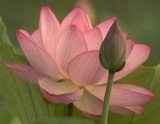
Founder of Buddhism, Pāli: Gotama Buddha or Gautama Buddha was a spiritual instructor in ancient India, between an estimated 563 BCE and 483 BCE (possibly even a century later).
An excellent book on Buddha’s life is, “Introduction to Buddhism,” by Geshe Kelsang Gyatso. He discusses how Buddha being the founder of the Buddhist religion called Buddha Shakyamuni, after Buddha’s real last name “Shakya” combined with “Muni” for Able One. A lesson in history tells the story of his life:
History Lesson
Long ago around 624 BC, King Shuddhodana and Queen Mayadevi Lumbini reigned in an area now belonging to Nepal, then referred to as northern India.
The queen has a dream one evening that a white elephant came down from the heavens or more specifically Tushita heaven, the Pure Land of Buddha Maitreya, and penetrated her womb. This elephant told the queen that she was had just conceived a baby, a powerful and pure being, from the same place the elephant was from, Tushita heaven, the Pure Land of Buddha Maitreya.
When Queen Mayadevi went into labor, she did not suffer painfully as most women do with birthing pains. Instead, the queen encountered or was a part of a vision, said to be pure and special. In this vision, she was standing with a branch of a tree held in her right hand. While this was going on, gods Indra and Brahma lifted the baby effortlessly and without pain from her, and ceremoniously honored him, AKA Buddha Skakyamuni, offering ritual ablutions to him.
Royal prince Buddha Skakyamuni was born. Or more to point, when the King Shuddhodana saw his son and felt as though he had fulfillment of his own wishes, he named his young prince "Siddhartha."
The king asked for predictions about his son’s future from a Brahmin seer. And the seer conducted a careful investigation.
He found that the prince could become either a world ruler or chakravatin king, or a Buddha, fully enlightened. But the reign of chakravatin kings is over, so he would surely become a Buddha. And the prince would influence and help many, many people worldwide just like the sun’s rays.
And so it has come to pass and Buddha has indeed influenced many, many people around the globe. His reach seems to be similar to that of the sun’s rays after all.
By Tony Ha




